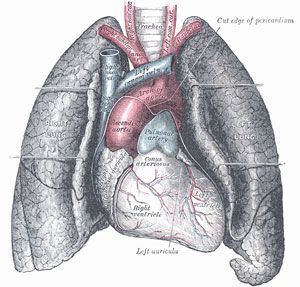Article
Weighing the Risk Versus Benefits of Transthoracic Needle Biopsies in Lung Cancer
Author(s):
A new study found that biopsies of lung nodules found during a CT scan may be unnecessary and dangerous.

A new study published in the August 2 issue of the Annals of Internal Medicine has found that biopsies of lung nodules found during a computed tomography (CT) scan may be unnecessary and dangerous.
Of patients who undergo a chest scan; about 25% of them have lung nodules. “When nodules show up, doctors and patients need to decide whether to biopsy that spot in the lung,” said lead researcher Renda Soylemez Wiener, MD, MPH, assistant professor of medicine at Boston University School of Medicine.
Weiner noted that as the occurrence of chest CT scans has increased, the rate of finding nodules has also increased. According to Weiner, these nodules, or spots in the lung have unknown clinical significance, and the risk may outweigh the benefit of taking the biopsy.
She also noted that 98% of lung nodules turn out to be benign. Yet, the number of chest CT scans is increasing. One possible reason for the increase in lung biopsies is the physician’s fear of being sued for not finding a cancer, said Weiner.
“There are risks to that surgical procedure, which may be more common than people realize,” said Weiner. A few of the potential complications of removing and examining a patient’s tissue sample, include lung collapse and bleeding.
The study looked at data on 15,865 adults who underwent a lung biopsy. Although bleeding was a rare complication that occurred in 1.0% (95% confidence interval [CI], 0.9-1.2%) of the patients biopsied, 17.8% had a bleeding complication that required a blood transfusion. The risk of pneumothorax, however, was 15.0% (CI, 14.0%-16.0%), and 6.6% (CI, 6.0%-7.2%) of all biopsies resulted in pneumothorax requiring a chest tube to expand the lung, for which patients remained in the hospital for a longer period of time.
Researchers of the study have said that the risk of complications was highest among older patients, smokers, and patients with chronic obstructive pulmonary disease.
The chief medical office for the American Lung Association, Norman H. Edelman, MD, commented on the study and said that due to the National Cancer Institute’s lung cancer screening trial, “the findings are especially relevant.”
Noting that doctors must usually choose between vigilant observation with subsequent CT scans and early biopsy, Edelman said that, “The current report should be helpful to physicians in making a ‘real world’ risk-versus-benefit analysis between the two approaches.”
Edleman believes that regional variations need to be scrutinized and said that,” If we are rational about resource utilization, we must solve the question of whether some regions do too few procedures and other regions do too many.”
Soylemez Wiener R, Schwartz LM, Woloshin S, Welch HG. Population-based risk for complications after transthoracic needle lung biopsy of a pulmonary nodule: an analysis of discharge records. Ann Intern Med. 2011;115(3):137-144.









